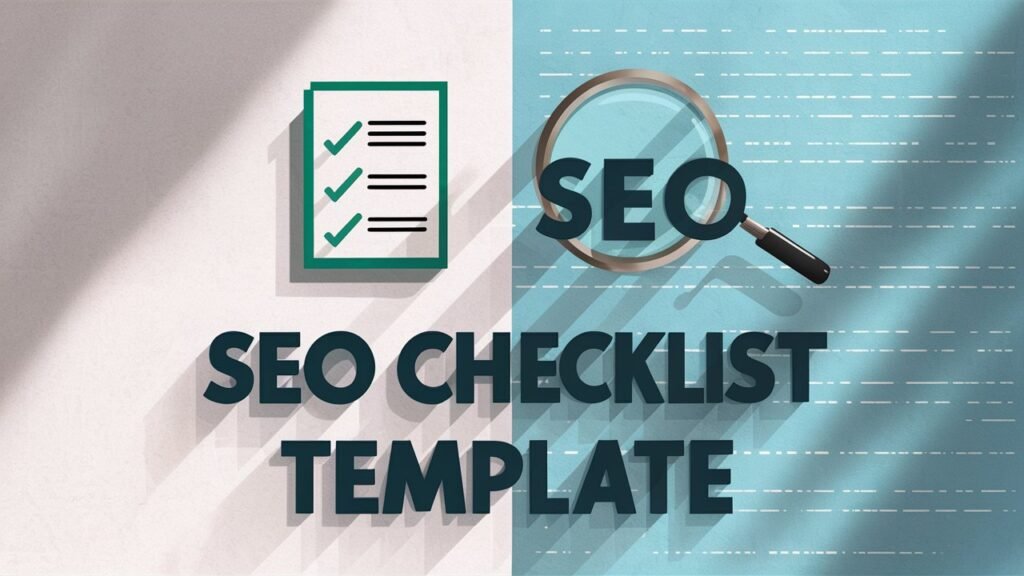
Optimize Your Blogging With This SEO Checklist Template
Creating SEO-friendly blog posts is crucial for attracting readers and driving traffic. Whether you’re a seasoned blogger or just starting out, having a solid plan can make all the difference. That’s where an SEO checklist template comes in handy. This template acts as your roadmap, guiding you through essential steps like keyword research, content optimization, and on-page SEO elements.
By following a structured approach, you can enhance your blog’s visibility in Google Search results. With the right tools, including the Google Search Console, you can track your performance and make necessary adjustments. Ready to optimize your blog? Let’s jump into this SEO checklist to help you write the best blog posts possible!
Key Takeaways
- SEO is key for driving organic traffic and boosting your blog’s visibility.
- Use an SEO checklist to cover all essential steps before publishing your blog post.
- Focus on primary and secondary keywords to enhance your content’s relevance.
- Optimize your blog content with LSI keywords for better search engine understanding.
- Utilize tools like Google Search Console to track your blog’s performance and make adjustments.
Importance of SEO in Blogging
The significance of SEO in blogging cannot be overstated. It directly impacts your blog’s visibility and helps attract the right audience. By using an SEO checklist template, you can ensure that each blog post is optimized for search engines. This involves focusing on relevant keywords, crafting compelling headlines, and structuring your content effectively.
Moreover, quality content remains king. Providing valuable information keeps readers engaged and encourages them to share your blog. Remember, the more people read and share your blog posts, the higher your chances of ranking well organically. Implementing these strategies not just boosts traffic but also establishes your authority in your niche, making SEO an indispensable part of your blogging success.

Benefits of SEO-Optimized Blogging
The advantages of blogging with a focus on SEO are numerous. You can enhance your blog post visibility, drawing more eyes to your content. An SEO checklist template helps you systematically optimize each piece, ensuring no detail is overlooked.
- Increased organic traffic.
- Improved user engagement.
- Higher conversion rates.
- Enhanced brand authority.
- Better understanding of audience needs.
- Long-term cost-effectiveness.
- Stronger competitor advantage.
When you create SEO-friendly blog posts, you’re not just writing; you’re crafting a pathway for potential customers. Using these methods will help you write blog posts that stand out in the digital noise.
Decoding the Term ‘SEO Checklist Template
Understanding the concept of an SEO checklist template can elevate your blogging strategy. This tool organizes tasks to ensure you cover every critical aspect of SEO before hitting publish.
It typically includes steps like identifying your primary and secondary keywords, optimizing headings, and ensuring proper image alt text. You can also incorporate LSI keywords to enhance relevance.
Using an SEO checklist template streamlining your process helps avoid missed opportunities that could affect your blog’s visibility.
Many bloggers find that referring to such a template can significantly improve their blog SEO. For deeper insights on how to utilize checklists effectively, Noah’s website offers valuable resources.
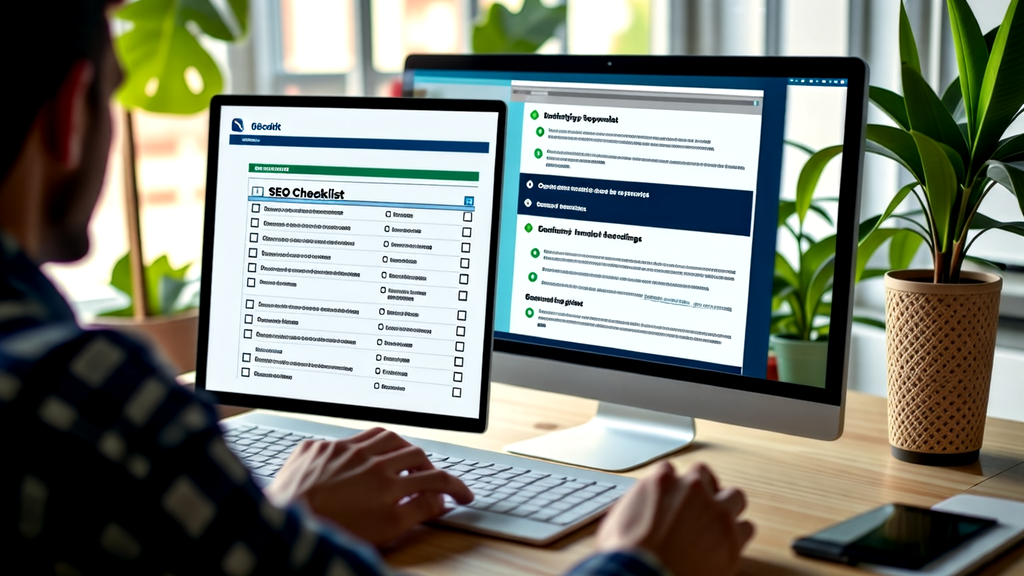
Preparing for SEO: Knowing Your Keywords
Understanding the keywords for your blog is crucial for effective SEO. Primary keywords guide your content, while secondary keywords offer support and context. Use tools like Google Keyword Planner to identify these terms.
Incorporating LSI keywords helps search engines grasp your content’s context better. Sprinkle these phrases naturally throughout your text.
A solid SEO checklist template can streamline your keyword strategy, ensuring you don’t miss any critical steps. Analyze your competitors to see their keyword strategies.
Monitor your performance using Google Search Console to refine your approach over time. By focusing on your keywords, you can improve your rankings and drive more traffic to your blog.

Role of Primary and Secondary Keywords
Your blog post should clearly define primary keywords as the main focus. They anchor the content and guide your audience’s expectations. Meanwhile, secondary keywords add depth and context, enriching the content and making it more relevant to search queries.
Using both types of keywords strategically can enhance your blog’s visibility in search results. This dual approach helps search engines understand your content better. Competitors often highlight the importance of balancing these keywords in their SEO checklist template.
By integrating these keywords effectively, you can create impactful, SEO-friendly blog posts. This method not just boosts your ranking but also attracts the right audience to your site.
Enhancing Blog Content with LSI Keywords
Using LSI keywords can truly elevate your blog content. These related terms provide context, making your writing more relevant to search engines. Incorporate them naturally throughout your post to enhance your blog post SEO.
Doing so not just improves on-page SEO, but also helps engage your audience. Sprinkle LSI keywords within headings and body text for better visibility.
Competitors often utilize tools like Google Search Console to identify effective LSI terms. This strategy not just aids in improving blog content, but also aligns well with your SEO checklist.
Remember, diverse vocabulary keeps your content fresh and appealing. Aim for a balanced use of LSI keywords to maintain flow while boosting relevance.

Ensuring Quality by Writing Longer Posts
Longer posts offer a chance to dive deeper into topics, enriching your content. Posts around 1500 words often perform better in search rankings. This depth not just adds value but positions you as an authority in your niche.
However, quality is key; filler won’t cut it. Instead, focus on providing useful insights that resonate with your audience. A well-crafted, SEO-friendly blog post can significantly enhance your visibility.
Utilize your seo checklist template to ensure each post is comprehensive. Include thorough research, relevant links, and clear headings. By maintaining this standard, you keep your audience engaged while improving your chances of ranking high in search results.

Leveraging Links: External and Internal
Linking to authoritative sources enriches your content and boosts your credibility. Incorporate external links to enhance trustworthiness. These links guide readers to reliable information and improve your on-page SEO.
For internal linking, create pathways within your site. This keeps visitors engaged longer and helps search engines crawl your content more efficiently. Aim to include at least two external and two internal links in each post.
Using an SEO checklist template can streamline this process. It ensures you don’t overlook these crucial elements. By focusing on both types of links, you’ll enhance your blog’s visibility and user experience. It’s a simple yet effective strategy for crafting seo-friendly blog posts.
Importance of Linking to Authoritative Sources
Linking to credible sources is a game changer for your blog. It enhances the trustworthiness of your content, making it more appealing to readers and search engines alike. When you direct your audience to authoritative sites, they feel confident in the information you provide.
Moreover, these connections boost your on-page SEO. Search engines recognize quality links, which can improve your rankings.
Maintaining a balance of internal links keeps users on your site longer, enhancing engagement. This approach not just elevates user experience but also impacts your blog post SEO positively.
Incorporate this practice into your seo checklist template to streamline your efforts and ensure your content stands out.
Importance of Heading Tag Optimization
Optimizing heading tags plays a crucial role in enhancing your blog’s performance. Heading tags (H1, H2, H3) not just organize your content but also signal search engines about the structure and relevance of your material. You should incorporate your primary keyword within these tags to improve your SEO-friendly blog posts.
Proper heading tag use makes your content easier to read for your audience, keeping them engaged longer. This can lead to improved rankings on search engines. Including keywords effectively in on-page SEO elements enhances visibility. Following an effective post SEO checklist will ensure you don’t overlook this important detail. Ultimately, well-optimized headings contribute significantly to your overall blogging strategy.
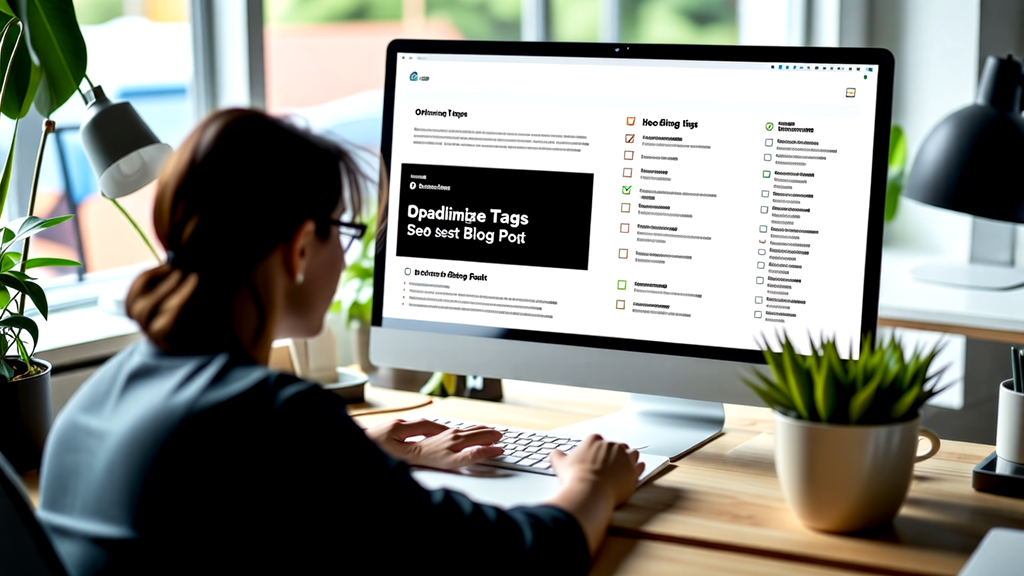
Image Optimization: Why it Counts in SEO
Optimizing images is crucial for your SEO strategy. Properly optimized images boost site speed, which search engines prioritize. Compressing images minimizes load times, leading to better user experiences.
Using descriptive filenames and alt text is another key factor. This helps Google understand what your images depict. Competitors often include relevant keywords in their image tags, enhancing search visibility.
When crafting your seo checklist template, ensure image optimization is included. Neglecting this aspect can hinder your SEO efforts.
Remember, faster sites tend to rank higher. Optimized images not just improve speed but also contribute to your site’s overall quality. So, don’t skip this step in your post SEO checklist.

Speeding Up Site with Optimized Images
Optimizing images plays a critical role in speeding up your site. Large image files can slow load times, frustrating users and impacting your ranking. Compressing images reduces their size without sacrificing quality.
Make sure to use descriptive filenames and alt text; this helps search engines understand your images better. You can improve your blog post SEO by incorporating relevant keywords into these elements.
Also, consider using next-gen formats like WebP for better compression and quality. Don’t overlook the power of lazy loading, which loads images as users scroll. A solid post SEO checklist should ensure you cover these image optimization strategies to enhance site performance and user experience.
Helping Google Understand Images
For Google to accurately interpret images, focus on details that convey their meaning effectively. Use descriptive filenames that reflect the image content. This simple step aids search engines in associating your images with relevant searches.
Incorporate alt text with relevant keywords, ensuring it describes the image contextually. This improves your visibility in image searches and enhances accessibility for users with disabilities.
Competitors suggest tools like Google Search Console to monitor how well your images perform in search results. These insights can guide your optimization efforts.
Implementing these strategies makes your images a valuable part of your overall on-page SEO. For effective image optimization, you might explore Xenus Link Sleuth for additional tools.
Crafting the Perfect Post URL
Creating an ideal post URL requires a few key strategies. First, keep it short and descriptive. This helps both search engines and users grasp the content quickly. Incorporate your primary keyword in the URL for better SEO, making it clear what your post is about.
Avoid unnecessary words and symbols that could confuse readers. Instead, focus on clarity. A clean URL improves user experience and can lead to higher click-through rates. When drafting, think about how your URL will appear in the Google Search Console. A well-structured URL is a crucial component of your on-page SEO template, making your blog more SEO-friendly.
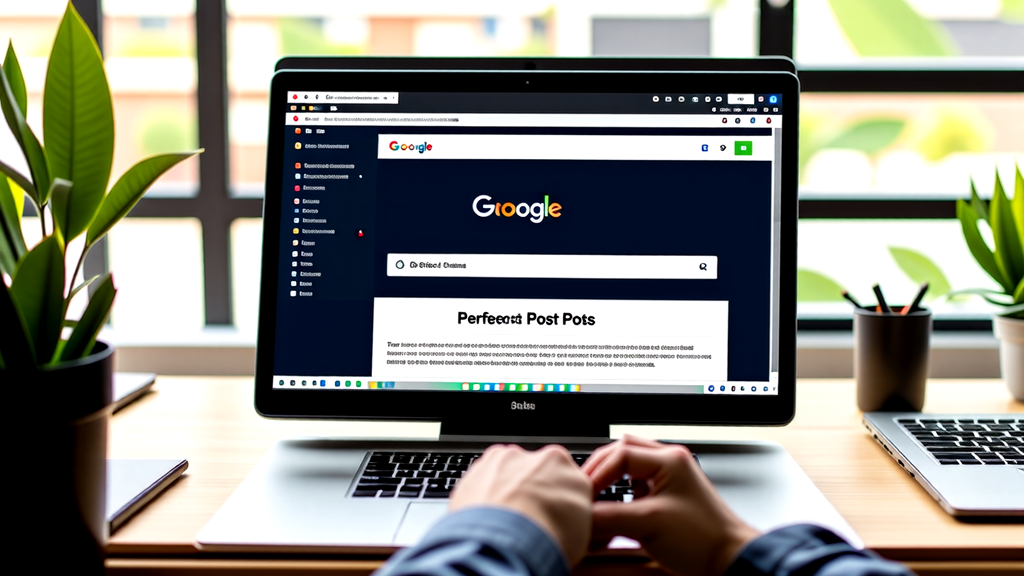
Making a Strong Impression with Blog Titles
Creating memorable blog headlines is key to catching your reader’s eye. A keyword-rich title notifies both your audience and search engines about your content. Using numbers and brackets can boost click-through rates, making your posts stand out.
An engaging title should reflect your blog’s essence while incorporating relevant terms. This approach aligns perfectly with your SEO checklist template, as optimizing your headings enhances discoverability.
Aim for clarity and intrigue—think of what would compel you to click. Consider phrases that evoke curiosity or promise valuable insights. By doing this, you not just attract attention but also establish a connection with your audience.

Add an Excerpt: Why it Matters
A brief summary, or excerpt, serves a crucial function in blogging. It captures the essence of your post, enticing readers to click and engage. By providing a sneak peek into what they can expect, you enhance your chances of improving click-through rates from search engines.
Moreover, excerpts boost SEO by incorporating keywords naturally, aligning with your overall SEO checklist template. In essence, a well-crafted excerpt can elevate your content’s visibility and appeal, making it more SEO-friendly. Take the time to write succinct, informative excerpts. This effort pays off by drawing in readers and keeping them on your page longer, which is beneficial for your overall blog SEO strategy.
For tips on crafting effective excerpts, check out insights from Ahrefs.
Maximizing Reach with Tags and Categories
Organizing your content with relevant tags and categories helps improve visibility online. These elements signal to search engines what your post is about, making it easier for users to find related topics. Use specific tags that accurately reflect your content. Categories should be broader, allowing readers to navigate your site more efficiently.
Implementing these strategies can enhance the user experience, encouraging longer visits. This, in turn, contributes to your blog SEO efforts. Keeping your content structured with tags and categories not just aids your audience but also aligns with your SEO checklist template. This approach is crucial for crafting SEO-friendly blog posts that attract organic traffic and improve overall site structure.
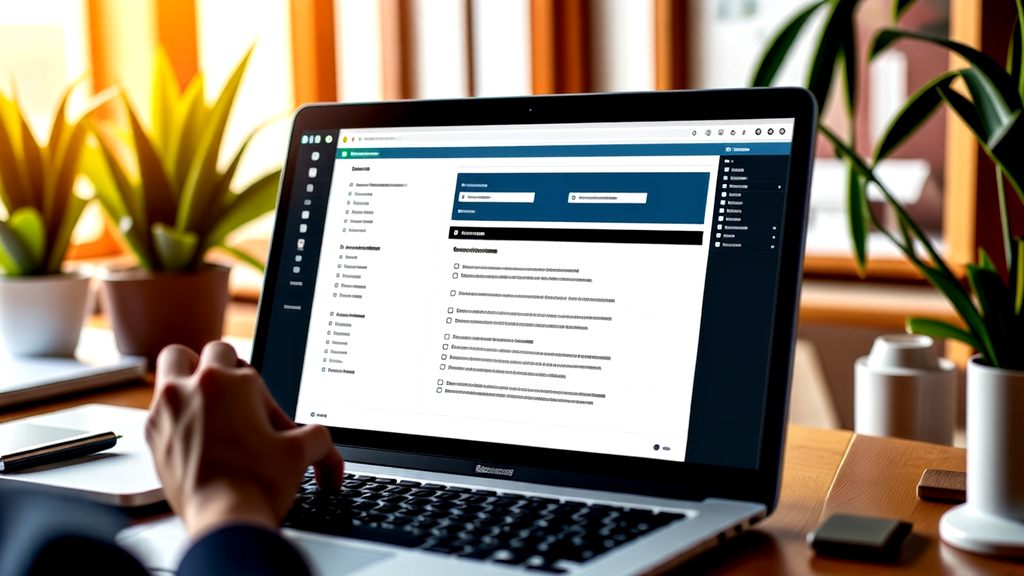
Making the Most of Thumbnail Images
Thumbnail images play a crucial role in attracting attention on your website and social media. Optimize these visuals just like any other image. Ensure they are compressed for faster loading times, which enhances user experience.
Use descriptive filenames and include relevant keywords in the alt text. This helps search engines understand the image content and improves your on-page SEO.
Make sure your thumbnails are visually appealing to entice clicks. A well-crafted thumbnail can significantly increase engagement, improving your chances of reaching a wider audience.
For additional guidance on Squarespace SEO strategies, check out insights from Elle & Company.
By following these tips, you can maximize the impact of your thumbnail images effectively.

10 Must-Have Items in Your SEO Checklist Template
When creating your SEO checklist template, certain elements are non-negotiable for success.
- Identify primary and secondary keywords.
- Include LSI keywords for relevance.
- Write longer, high-quality posts to engage readers.
- Add both external and internal links to improve authority.
- Optimize heading tags for clarity and structure.
- Compress and optimize images to enhance load speed.
- Craft short, keyword-rich URLs for better search visibility.
- Write compelling blog post headlines to boost click-through rates.
- Add a concise excerpt that summarizes the content.
- Use relevant tags and categories to improve site organization.
These components will ensure your blog posts are SEO-friendly, increasing visibility and traffic effectively.
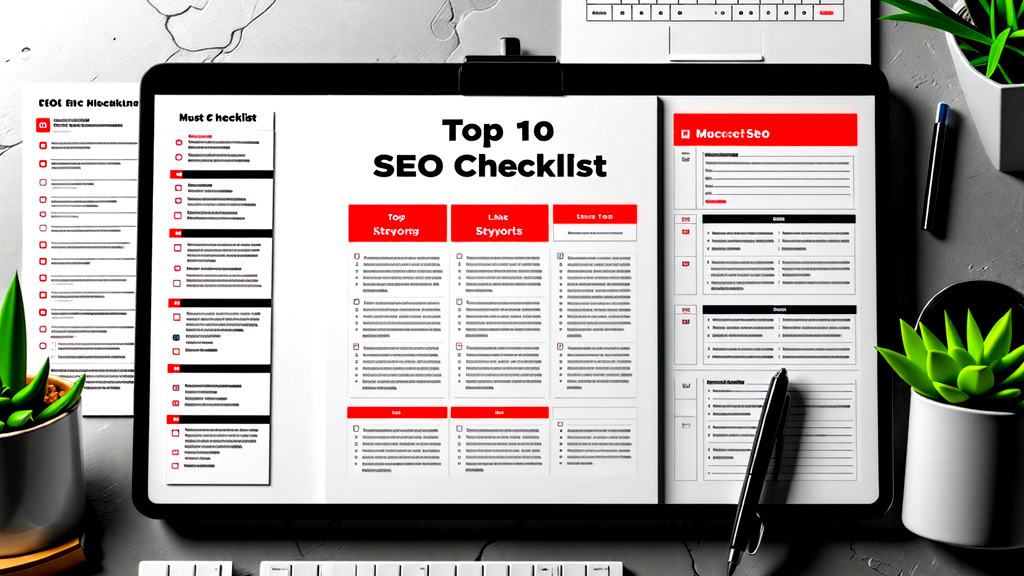
Conclusion
Using an SEO checklist template can greatly enhance your blogging efforts. It helps you stay organized and ensures you cover all the essential elements for better visibility online. Remember, each step you take to optimize your blog can lead to increased traffic and engagement.
As you implement these strategies, the results will speak for themselves. You’ll notice a steady rise in your blog’s performance and audience reach. Keep this checklist close by, and watch your blogging journey thrive!
FAQ
- Why is SEO important for my blog?
SEO helps your blog get seen by more people. It increases your visibility on search engines. Better visibility means more organic traffic. This can lead to more readers and potential customers. - What is an SEO checklist template?
An SEO checklist template is a guide. It helps you cover all SEO aspects before publishing. Key steps include keyword research and content optimization. Using this template can streamline your blogging process. - How do I find the right keywords for my blog?
Start by identifying your blog’s main topic. Use tools like Google Keyword Planner. Look for both primary and secondary keywords. Consider LSI keywords to enrich your content. - Why should I optimize my images?
Optimized images speed up your site and improve SEO. They help search engines understand your content better too. Always use descriptive filenames and alt text. This enhances both user experience and visibility. - How can I improve my blog’s click-through rate?
Write catchy, keyword-rich blog post headlines. Use numbers or brackets, as they attract attention. Add an excerpt to summarize your post. This encourages readers to click and engage with your content.
Recent Posts
Affiliate Offer Goldmine: How I Find Profitable Affiliate Offers
Affiliate marketing can be overwhelming if you rely on guesswork or follow generic advice. I've discovered that most beginners waste time promoting overcrowded, untested, or unprofitable offers. In...
As an affiliate marketer, you know how crucial it is to create engaging and effective blog posts that drive traffic and generate sales. But coming up with fresh and profitable ideas can be a...

